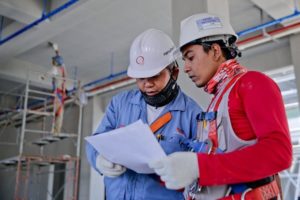
Ground-penetrating radar contributes significantly to a construction project by creating a safer working environment.
Ground-penetrating radar is a technique used in construction that lets people map out structures and features that are buried underground. It transmits high-frequency electromagnetic waves underground by using an antenna. The waves spread underground and come into contact with objects that have various electromagnetic properties. The waves then get reflected back to the surface. This creates an image that identifies potential obstructions to a construction project. If left unchecked, these obstructions could cause problems on the job, which can jeopardize the safety of the workers. Ground-penetrating radar contributes significantly to a construction project by creating a safer working environment.
Why Should GPR Be Used?
Ground-penetrating radar is primarily used to find objects that are underground. It’s one of the least destructive methods for locating obstructions, and it doesn’t require any drilling, cutting, or coring. GPR is incredibly versatile, and it can be used on many different materials, including soil, ice, pavement, rock, and concrete. It can find subsurface features that have electrical properties that differ with the properties of surrounding concrete or soil. One of the biggest selling points for ground penetrating radar is that it is a non-destructive way of locating objects. This promotes a safer work environment and helps people save time and money in the long run.
Applications of Ground Penetrating Radar
GPR has many useful applications that let it be used in several different fields. GPR has uses in the construction industry because identifying any potential obstructions to a construction project is essential for ensuring the safety of workers. When workers know nothing is blocking the path, cutting and coring can be done safely. This saves workers time and money. GPR is most commonly used in construction and engineering as a type of non-destructive testing on various structures. You can use ground penetrating radar for utility locating and concrete scanning, among other things.
But GPR has other uses too. It can be used in earth sciences for reasons such as studying bedrock, soils, and groundwater. You can even use ground-penetrating radar in archaeology as a means of locating various archaeological features. Some even use it in military and law enforcement to detect hazardous objects like landmines.
Concrete Visions Will Get The Job Done Right
Concrete Visions has been working with clients for over 25 years. Our G&M Services installers are certified with the industry’s major firestop product manufacturers. As part of our firestop service, we can assess abnormal field conditions and, with the manufacturer’s technical support assistance, provide engineering judgments in a timely fashion to comply with contract specifications. Our Field Mechanics undergo ongoing training, including mandatory monthly safety meetings, weekly Toolbox Talks where safety and equipment information is shred, and trainings on safe work standards and safety best practices.
